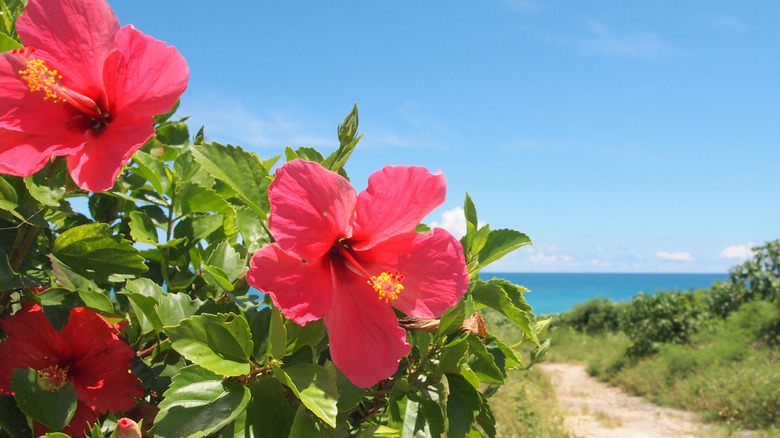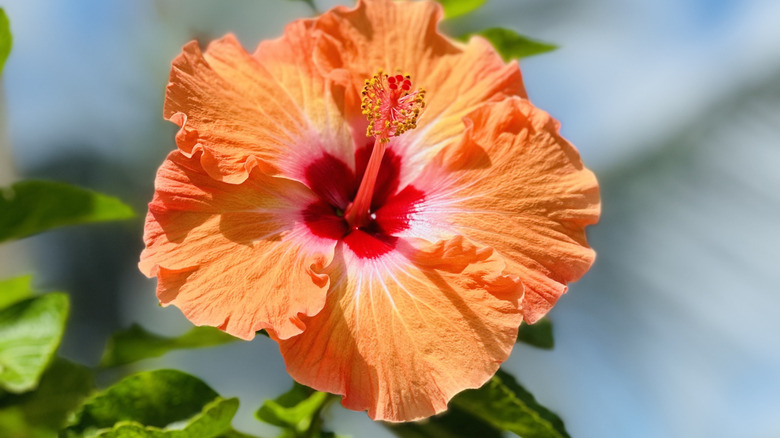The Best Time Of Year To Fertilize Hibiscus For Beautiful Blooms
There are many colorful varieties of hibiscus flowers you can choose to brighten up gardens and patios, and they can be grown in both beds or containers. These vivid bloomers are known for being relatively easy to grow, but they do require sunlight, a good amount of water, and some feeding to look their best. And since you probably want to get the most robust and beautiful blooms possible, one of the things you need to know about Hibiscus flowers is when to fertilize your plant. That varies a bit different depending on whether or not your hibiscus is planted in the ground or potted in a container, but it all starts in the springtime.
When growing either rose mallow hibiscus (Hibiscus moscheutos) or tropical hibiscus (Hibiscus rosa-sinensis) in the ground, giving your plant its first application of a slow-release mineral fertilizer in very early spring after it is pruned–but before it starts to put on foliage–is recommended. Then you can feed again after buds start forming, once more in the middle of summer, and a last time in the early winter to keep the plant healthy. Hibiscus plants grown in containers have to be watered more frequently in the summer, so they need fertilizing more often to keep the soil nutritious. As the weather heats up, plan on fertilizing them with water-soluble plant food mixed with water every fourth time you give the plant a generous drink.
More on fertilizing your hibiscus plant
When it comes to selecting the right type of slow-release fertilizer for a hibiscus plant, a 20-20-20 or 10-10-10 balance of nitrogen, phosphorus, and potassium is recommended for regular feeding beginning in the spring. However, growers warn against excessive amounts of phosphorous that can build up in the soil so you may want to try one with a lower middle number (like a 10-4-12 or 9-3-13) if you're noticing yellowing or drooping leaves. When using water soluble fertilizers, it's suggested to cut them to half potency to avoid adding too much of a good thing.
If you're seeking alternative plant foods, you can try spreading compost on top of the soil in the springtime instead of using mineral fertilizer. Even leftover ingredients can be used to fertilize your hibiscus. Which ones are best? Coffee grounds and tea leaves can both serve this purpose when sprinkled on top of the soil (used coffee grounds should be dried first; tea leaves can be used wet or dry). They won't take the place of other mineral-based fertilizers since they don't add quite enough nutrients to the soil on their own, but they can be used occasionally as a supplement. Providing you consistently fertilize from spring through early winter, though, you can count on a healthy hibiscus plant that will put on a beautiful blooming show for you.

